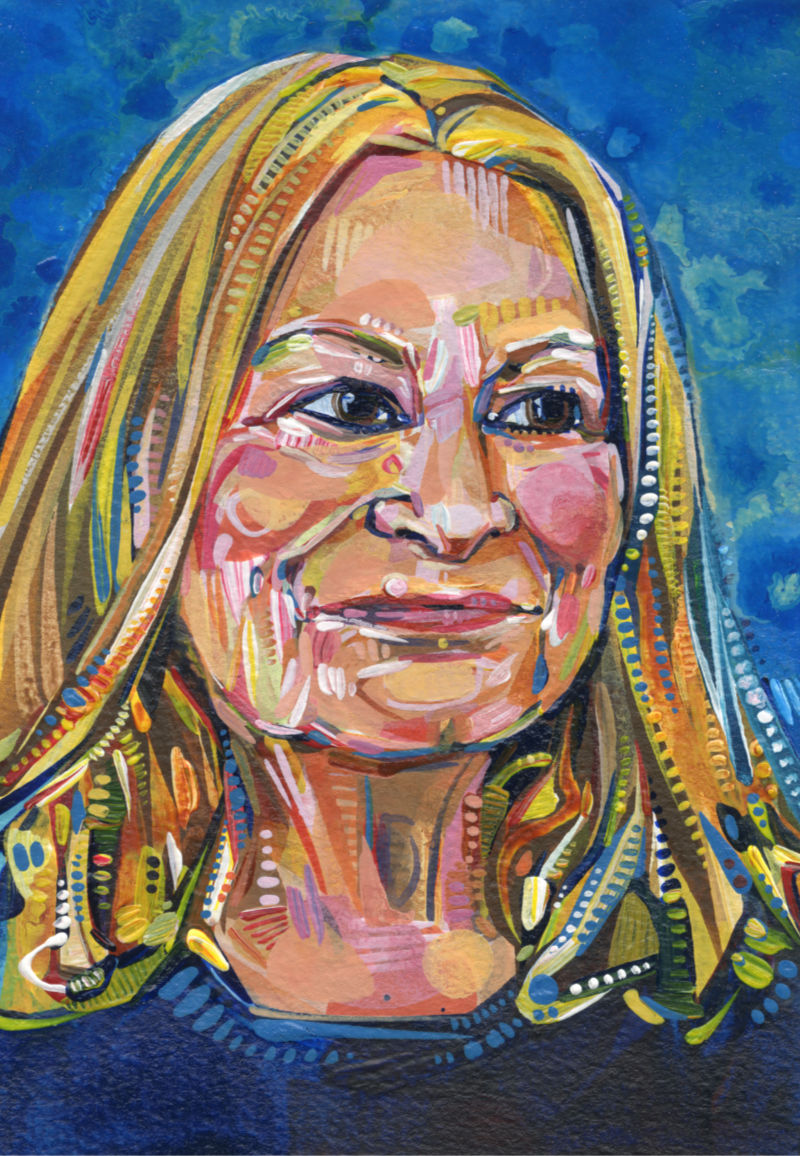Blog / 2023 / Painting Skin in a Portrait
August 3, 2023
For Part 6 of this blog series dedicated to painting portraits, we’re moving beyond more straightforward features like eyes and teeth to talk about skin color, a piece of the portrait puzzle that many artists tend to both overcomplicate and underappreciate.

Lee Pelton
2003
acrylic on canvas
38 x 30 inches
To explain: the first time I painted a black person’s portrait, it was this painting of the president of my university. When I showed it to one of my professors—a white man—he was impressed, and he asked me if it had been difficult to mix the color of black skin. The question surprised me since the answer seemed so clear, but I answered that I knew how to paint President Pelton the same way I knew how to paint everybody else.
I looked carefully at the subject.
Because that’s the obvious thing about skin color that often gets lost in the overcomplicating shuffle: no matter their ethnicity, every person has a skin color. Or, actually, each individual has a multitude of tones, which shift depending on mood and health. Since that’s the case, the only way to accurately capture someone’s coloring is to observe them and then try to match what you see in paint.
Which brings us to the most underappreciated element of skin tone: the luminosity that every person has, simply by being alive. It’s something about the way our blood and our skin interact, giving every last individual a kind of glow.
If you’re having trouble picturing what I mean, think of a loved one wearing make up versus when their face is bare. The luminosity I’m describing is most noticeable when it’s gone, like when someone mutes their natural light with a flattening layer of cosmetics. And, to be clear, this isn’t my way of saying that people shouldn’t wear makeup, just that cosmetics create a different effect than bare skin. The important thing is that, whether or not a subject is made up when you observe them, you should give them their luminosity when you paint their portrait.
As you can see from this process video of Jane’s portrait, I generally start with lighter colors, then layer in darker ones that are translucent enough to allow that luminosity to shine. I go back on top of the darker layer to pick out highlights, and then add more rich colors on top of that. I repeat these steps, going back and forth between light and dark many times as I search for the best way to represent a person, both in their coloring and in their other features.
I understand that people might be looking for a recipe—what amount of burnt umber or quinacridone gold or titanium white will equal a given skin tone, for example—but the fact is there is no formula for painting a person. You just have to pay attention to the subject.
In this way, skin tone is perfectly representative of the portrait process, because making a likeness is, above all else, an exercise in looking carefully. The tips I’ve talked about in this blog series can be useful, but only if you pay close attention to the subject.

Jane
2022
acrylic on paper
7 x 5 inches
Jane is part of Friend Request, a series of paintings of people I met after leaving social media. For more about how to hire me to paint you a portrait, check out this page.
UPDATE
August 12, 2023
These are the rest of the articles in the portrait series: where to start and painting the nose and ears, eyes, mouth, teeth, signifiers, and breath and movement.
Maybe this post made you think of something you want to share with me? Or perhaps you have a question about my art? I’d love to hear from you!
To receive an email every time I publish a new article or video, sign up for my special mailing list.
If you enjoyed this post, Ko-fi allows you to donate. Every dollar you give is worth a bajillion to me!



